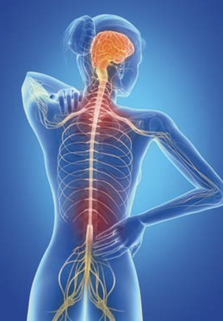Obesity-related illness is higher than ever throughout the Westernised world, and it’s becoming more of a problem for our children.Obesity is fast becoming a health crisis; it’s a high risk factor for many serious illnesses, including heart disease, type 2 diabetes, some cancers, and stroke.
The majority of research shows that sugar- sweetened drinks are strongly linked to weight gain, so cracking down on these is one of the simplest ways to reduce the risk of children becoming obese. Sugary drinks include soft drinks, energy drinks, and flavoured waters. They have little or no nutritional benefit, and can contain a shocking amount of sugar. Generally people know about the dangers these pose to their teeth and gum health, but may be unaware of the sheer volume of empty kilojoules they’re drinking. These highly sweetened drinks – which often also contain caffeine and assorted additives – can be addictive, and it’s easy for kids to get hooked on them. However there are some simple ways to break the habit and reduce your family’s consumption. HOW TO CUT OUT SUGARY DRINKS First, remove the temptation – don’t keep sweet drinks in the home. Getting everyone into the habit of drinking water is the best option, although it may not be easy. Try sparkling water, adding a slice of fruit, mint leaves, or cucumber to make it appealing. Milk or healthy milk alternatives are also a good choice. Avoid drinks containing artificial sweeteners as they won’t help break the sugar habit. Fruit juices may not be the healthy alternative they seem either – they have a high sugar content and relatively low nutrients. Remember young children can only consume what you give to them, so you can ensure they eat healthily. As children get older, education is important. It’s not always easy to get teenagers to take health risks seriously. Giving them the right information and ensuring they understand the seriousness of a poor diet is a good start. We don’t need sugary drinks and it’s best to avoid them altogether. If your child is already keen on them, expect some resistance, be patient, lead by example, and know that you’re doing your best for your family’s health.
0 Comments
As school heads back for another year it’s the ideal time to consider your child’s backpack. Is it fitted correctly? Too heavy? Could it be damaging their spine and health?Our posture is affected by the size, weight, and the way we carry our bags. Research shows that school backpacks often weigh 15-25% of a child’s body weight. This weight is lugged around daily, and regularly carrying a heavy load strains the spine. A forward lean is often adopted in order to remain upright. A bag worn on one shoulder can lead to spinal imbalance. A backpack’s size can alter how the head sits on the neck. These spinal adaptations can trigger neck and back pain and headache.
The first consideration is the size and type of backpack. It should be appropriately sized for your child, and padded at the back. Next, the backpack should sit at the top of the hips. Hip belts help to distribute the load. Thick, padded shoulder straps must be worn over both shoulders. Next is the load. Heavy items like textbooks should be placed at the base and to the back of the bag. Light items can be positioned at the front. If the bag and its contents weigh more than 10% of your child’s body weight, it’s too heavy. Discuss and decide what can be left out and make regular reassessments to ensure the weight stays low. The way your child wears their backpack matters to their health. It’s important to get this right! If you’re unsure about your child’s bag, or whether they’re wearing it correctly, ask your chiropractor for expert advice. Are you working from home? The past year has brought an unprecedented move from workplace to working from home. For many, there are advantages like no commuting and a better work-life balance. On the flip side, it has resulted in workstations with poor ergonomic design. A computer balanced on a stack of books. Hours spent hunched over a kitchen bench. Slouching on the couch with a laptop balanced on the knees.WHY IS IT IMPORTANT?
If we hold a strained posture for hours on end, our body gets tired. Let’s try this simple experiment... locate a heavy book and sit holding it near to your chest. It will rest easily because this position requires little effort. Next, hold the book out at arm’s length. Notice how quickly the book feels heavier? Observe how fast your arms weaken and ache. Poor posture increases the strain through the spine and body in the same way. When your workstation is set up incorrectly, it alters your posture. Your head may jut forwards and shoulders round over. The bend though your upper back increases and your lumbar spine loses its natural forward curve. Your hips, ankles, knees and wrists get compressed. Headaches and pain in your neck, back, shoulder, arm and wrist can result. SETTING UP YOUR WORKSTATION AND POSITION To check your posture, set yourself up as usual at your desk and ask someone to photograph you from the back, front and sides. Take these photos to your chiropractor for advice, or assess yourself against these guidelines:
Wherever you work from, the correct ergonomic set up is worth the effort. Reach out to your chiropractor if you need guidance. Have you heard of degenerative disc disease and wondered what it is? Maybe you’ve asked yourself if you’re at risk, or how it happens and whether it’s possible to prevent it.Degenerative disc disease (DDD) is a common condition in which age-related wear-and-tear on a disc causes pain, instability, and other symptoms. When we reach the age of 50 and beyond, regardless of gender, more than 90% of the population has the condition.
The most commonly affected joints include those in the cervical region (neck), and lumbar region (lower back). These areas of the spine are more susceptible as they undergo the most motion and stress. DDD occurs, as its name suggests, when the discs between the vertebrae degenerate, or deteriorate. The discs narrow and develop tears. The disc material can protrude into the spinal canal, called posterior disc protrusion. Bony spurs (osteophytes) can grow at the edges of the vertebrae. Together, reduced disc height and protrusion can combine with spur growth to cramp the space where a nerve leaves the spine. It’s like a narrow tunnel; there’s less room to move. These disc and bony changes can press on the nerves and cause pain. If a nerve is compressed in the neck, it might cause arm pain; if it’s a compressed nerve in the lower back, shooting pain could strike the leg. Symptoms, though, might not relate directly to a compressed nerve. There might be pain on bending, lifting or sitting. Relief may be found by changing positions, lying down or walking. Or there might be flare-ups that come and go. The amount of pain varies between individuals and can range from minor irritation to severe. Surprisingly, sometimes there’s no pain at all; some people are shocked when an MRI reveals they have long-standing, significant issues with spurs, a narrowed disc height and degeneration... but there are no symptoms. Being pain-free doesn’t guarantee you don’t have DDD. WHO IS AT RISK? Whilst being older is the biggest risk, other factors can accelerate the process of degeneration. These include:
To aim for prevention, we should reduce any risk factors. While we can’t reverse our age, we can maintain an ideal weight, quit smoking, lift correctly, and improve our posture. Moderate, daily exercise can help strengthen the muscles that surround the damaged discs without placing too much stress on the spine. Regular stretching can help DDD, whilst also increasing your flexibility and strength. If you’d like more advice about prevention, or need targeted treatment, speak to your chiropractor. 22/12/2022 0 Comments Know more about your kneesIf you were to take 7500 daily steps over the course of 80 years, you would rack up over 219 million paces in your lifetime. That’s a lot of work for two knees. It’s little wonder they can develop problems and become painful. Knees are prone to a range of issues.HOW DO THE KNEES WORK?
The knees are known as hinge joints. They move (mostly) forward and backward, like the hinges on a door. This type of movement means we can walk, hop, skip and run. But it requires many parts to ensure we remain stable as we move. Each knee is formed by three bones; the thigh bone (femur), the shin bone (tibia), and the kneecap (patella). Ligaments and menisci join these bones together, holding them fast. Cartilage lines the ends of the bones − this strong, rubbery layer stops the bones from grating together. A capsule surrounds the joint and holds the joint (synovial) fluid in. Just like oil in a car’s engine provides a protective coating to stop the engine from seizing up, synovial fluid helps to prevent damage and degradation. The quadriceps, hamstrings, and calf muscles allow the knee to move. When each part works well, our knees do too. They bend while remaining stable and function under pressure. But with so many moving pieces, it’s easy to see why problems can occur. If a part loses strength, or the stress within a knee becomes too much, damage occurs. COMMON KNEE PROBLEMS Common problems include sports-related injuries, damage from accidents, and changes that develop over time like the wear and tear of age-related arthritis. If a ligament or meniscus is torn, the knee can become painful, even unstable. An anterior cruciate ligament (ACL), or medial meniscus tear often happens during sports. The ACL is at risk from fast direction changes, stopping suddenly, and landing after a jump. Menisci are at risk when we pivot, stop suddenly, or squat deeply. These tissues can also be injured from direct trauma or when underlying wear and tear is present. Sometimes the muscles can be weaker or stronger than they should be. This can cause knee pain and problems. For example, in a condition called patellofemoral syndrome, a muscular imbalance changes the patella’s path. Instead of being pulled along the middle of its tract, it’s drawn along the outside. The usual ease of movement is replaced by a painful, bumpy journey. Wear and tear is a common knee problem too; as arthritis sets in, cracks in the cartilage and reduced joint fluid lead to swelling, stiffness, grating and pain. These changes can reduce a joint’s height and allow exposed bone to peek through the cartilage. Ouch! As you can see, the knee is complex. Depending on your circumstances; being overweight, sports, kneeling, poor posture, injury or arthritis could be hurting your knees. If you have knee pain, talk to your chiropractor. 14/12/2022 0 Comments Chocolate Avocado MousseSee if anyone can guess it’s made with avocado!Ingredients:
2 avocados - flesh removed and chopped 200g good quality dark eating chocolate, chopped 1/3 cup milk (cow, almond, coconut - depending on your preference) 1-2 tablespoons liquid honey or pure maple syrup Berries for garnish Method:
|
AuthorAdam's Back is a team of dedicated complimentary health professionals. Our aim is to support you in finding drug-free solutions for better health. Archives
July 2024
Categories |
Search by typing & pressing enter







 RSS Feed
RSS Feed